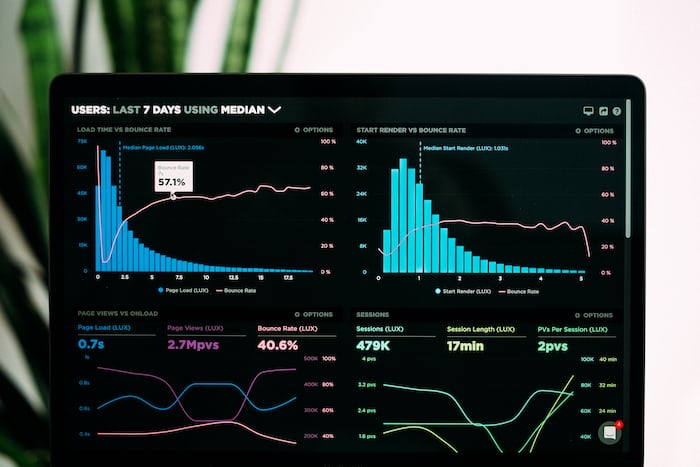Designing and developing databases and information warehouses involve complex decision-making, and data modeling is one such crucial factor. Data engineering teams follow two popular data modeling approaches for business data solutions: top-down and bottom-up. Let us discuss each and compare them to find the best data modeling technique between them.
Top Down Data Modeling Approach
A top-down approach is an organized and structured way of data modeling, the most crucial part of data engineering. In this approach, the process starts with an overarching view of the whole system and its functionalities. The following characteristics define the overall details of a top-down approach.
Conceptual Design
The first phase includes the complete system design, and the process begins with the high-level business needs. It focuses on understanding the complete structure of the system, like identifying business entities and their relationships following the business rules governing them.
Entity-Relationship Diagram(ERD)
An ERD is used to illustrate the conceptual design of the business project. It depicts a more evident architecture of components like objects as entities, properties of entities as attributes, and the association between entities as relationships. ERD includes the flow among the entities, attributes, and their relationships.
Decomposition
A high-level conceptual model is complex to achieve on the whole; making it smaller low-level detailed models will ease the process. Decomposing the complex model continues from the top level with complexity to the lower level until the complexity reduces to the desired level.
Iterative Process
The top-down approach follows iterative progress to refine the project model. Every iteration takes input from the users’ or stakeholders’ feedback and the domain experts to incorporate the suggestions and reviews into the model to improve the accuracy and system performance.
Business Perspective-Oriented Approach
The top-down approach initially aims to understand the whole business process and requirements to ensure every concept is listed and documented before starting the technical implementation.
Bottom-Up Approach
The bottom-up approach follows different data modeling processes, which take incremental and detailed execution of project components. These components are individual building blocks of the whole data model, which deliver the final data modeling output. The following are the characteristics of the bottom-up approach:
Analysis
The bottom-up concept of modeling starts with proper analysis of the information from versatile data sources like digital files, spreadsheets, or databases. The analysis aims to find the underlying components and relationships among the project data sources.
Data Schema Discovery
The tools and techniques we use in the bottom-up approach will automate the discovery process of data schema and relationships from the existing databases and data sources.
Data Integration
After identifying the individual components of the process, each component integrates with the following one to develop the final data model. Consolidation, transformation, or aggregation of the data are the most popular methods of integration businesses follow while implementing a button-up approach.
Refining Schemas
Iterative schema refinement improves the final output of the data model to ensure no bottlenecks arise while analyzing and integrating the data from multiple sources. Each data element from the data sources is asynchronous, and we need to validate and refine the information to refine the schema.
Technical Perspective
Unlike the top-down approach, the bottom-up approach focuses on the core technical functionality of the data model and the component integrations. It also prioritizes the developing model’s efficiency and compatibility with the existing infrastructure and applications.
Comparing Top-Down and Bottom-Up Approaches
After going through the characteristics of both data modeling techniques, we shall compare the similarities and differences closely to understand more about efficient data modeling.
Scope
The top-down approach expects a complete system view before getting into technical execution. In contrast, the button-up approach gets into the action immediately with the specific data components and builds the model incrementally.
Detailed Traversal
The top-down approach focuses on the higher level concepts like relationships, and the bottom-up approach on the complete details of the data components building a comprehensive data model.
Technical Activities
The top-down approach concentrates on the business requirements, whereas the bottom-up approach on the technical integrations and the compatibilities with the existing systems.
Flexibility
The top-down approach helps build a strong foundation for the data model by identifying the critical business entities and relationships before getting into the technical operations. The bottom-up approach seems flexible in managing and incorporating diverse data sources and aims to provide an updated data model adopting the evolving requirements.
Iterative Process
Both approaches involve iteration, but the top-down approach involves more iterations to refine the model based on the stakeholders’ and experts’ feedback and analyze the insights to incorporate them into the data model.
Integrations
Due to its high-level view, the top-down approach requires extra effort to integrate the data sources of various origins. Still, the bottom-up approach makes it easy to integrate the components with data sources incrementally.
Conclusion
When choosing the best approach to designing the data model, experts prefer to combine both and use individual characteristics of the approach depending on the project’s requirements and constraints. Some projects may provide better data models when working with the top-down approach, while others may find the bottom-up a feasible approach. The scope of the project, the complexity of the components and integration, recourse availability, integrations with the existing data sources and systems, and the stakeholder requirements are the most common factors that define which approach fits right for the project.

